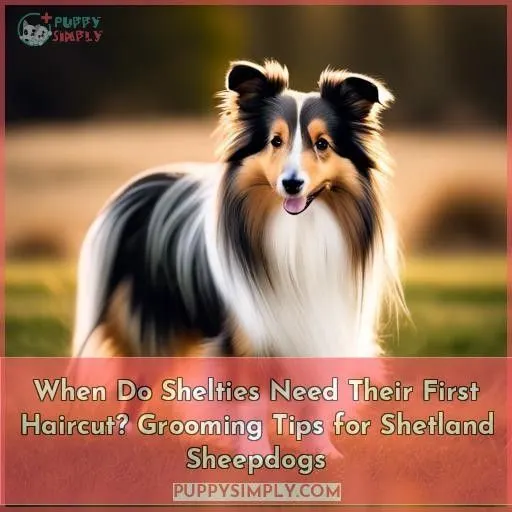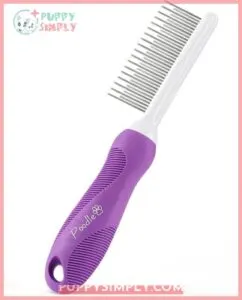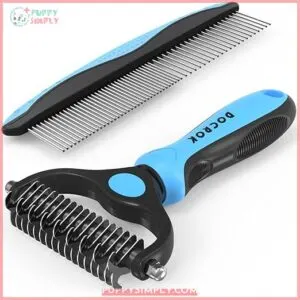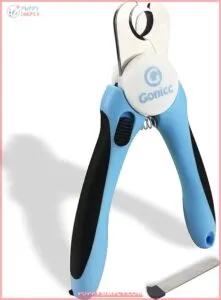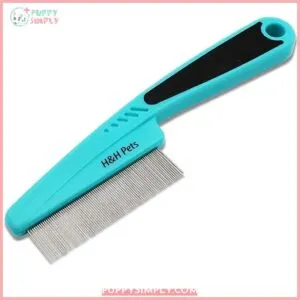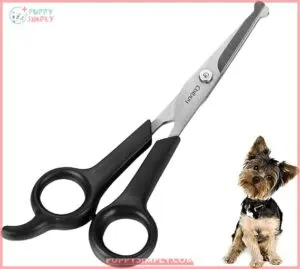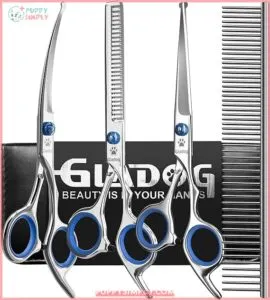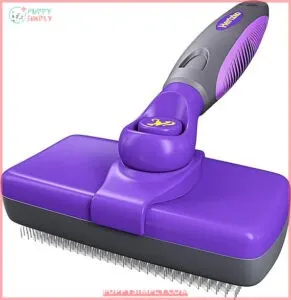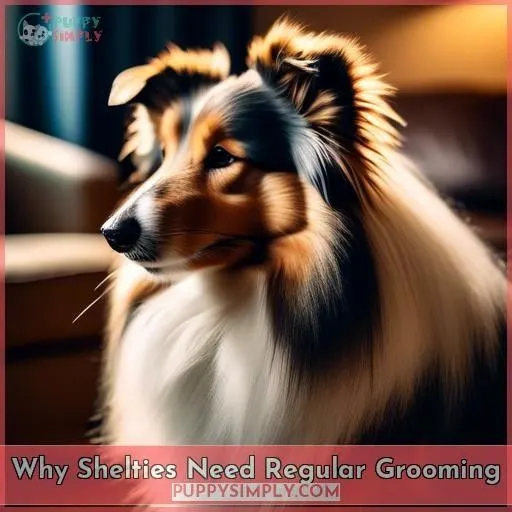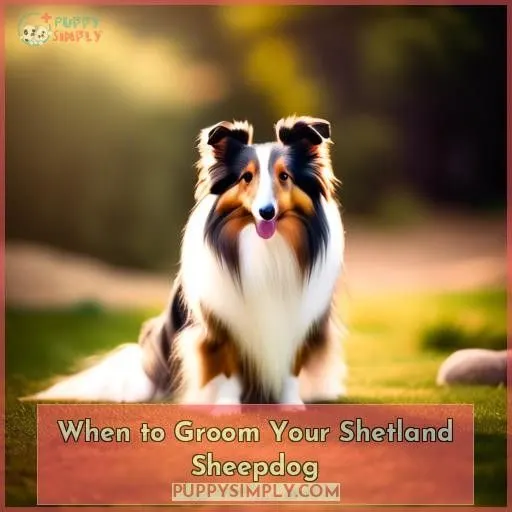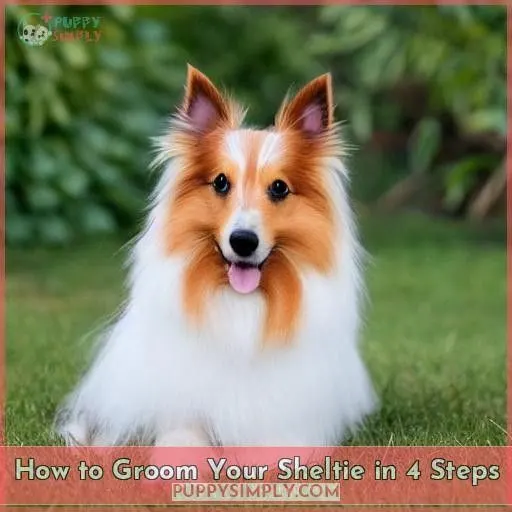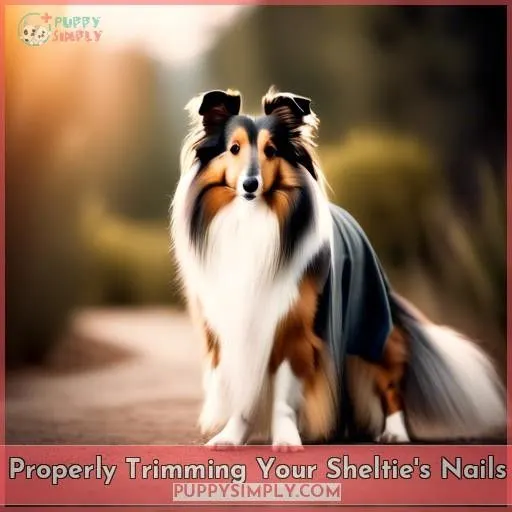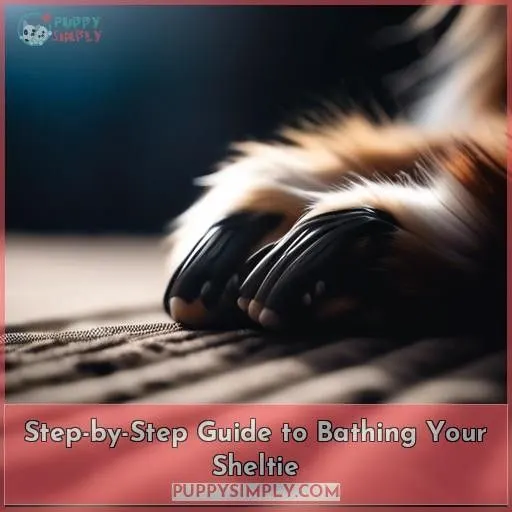This site is supported by our readers. We may earn a commission, at no cost to you, if you purchase through links.
As a new Shetland Sheepdog owner, you’ll want to give your furry companion their first haircut around 4-6 months old when their adult coat starts coming in.
Shelties have a gorgeous double coat that needs regular grooming to remove loose undercoat, prevent matting, and maintain a healthy shine.
Don’t worry if you’re unsure how to groom or when Shelties need their first haircut – we’ll guide you through the proper tools, techniques, and frequency to keep your Sheltie looking their best.
With the right approach, grooming can be a bonding experience for you both.
Table Of Contents
- Key Takeaways
- 8 Best Grooming Tools for Shelties
- 1. Poodle Pet Detangling Comb Stainless Steel Teeth
- 2. Pet Grooming Brush Comb Combo
- 3. Gonicc Professional Small Dog Cat Nail Clippers
- 4. Hartz Groomers Best Flea Comb Dogs Cats
- 5. Upgraded Rubber Handle Dog Hair Comb
- 6. Professional Pet Grooming Scissors Stainless Steel
- 7. Professional 5-in-1 Dog Grooming Scissors Set
- 8. Hertzko Self Cleaning Slicker Brush
- Why Shelties Need Regular Grooming
- When to Groom Your Shetland Sheepdog
- How to Groom Your Sheltie in 4 Steps
- Properly Trimming Your Sheltie’s Nails
- Step-by-Step Guide to Bathing Your Sheltie
- Frequently Asked Questions (FAQs)
- Conclusion
Key Takeaways
- Shelties need their first haircut between 4-6 months old when their adult coat starts coming in.
- Regular grooming is essential to remove loose undercoat, prevent matting, and maintain a healthy shine.
- The right grooming tools, such as a detangling comb and slicker brush, can make grooming a bonding experience for you and your Sheltie.
- Proper grooming techniques and tools can help manage shedding, reduce dander and allergens, and keep your Sheltie’s coat healthy and beautiful.
8 Best Grooming Tools for Shelties
As a Shetland Sheepdog owner, you’ll want to have the right grooming tools on hand to keep your pup’s luscious coat in tip-top shape. From a detangling comb to a self-cleaning slicker brush, these 8 essential grooming tools will make caring for your Sheltie’s coat a breeze.
1. Poodle Pet Detangling Comb Stainless Steel Teeth
You’re in luck, as the Poodle Pet Detangling Comb Stainless Steel Teeth is a fantastic addition to your grooming arsenal. This 2-in-1 comb is a must-have for pet owners, especially those with Shelties. Its dual length metal teeth are perfect for long or short hair breeds, making it a versatile tool for various coat types.
Recommended by professional groomers and pet owners, this comb is gentle on your Sheltie’s skin while effectively removing mats. The ergonomic design and durability make it a reliable choice for keeping your furry friend’s coat healthy and tangle-free.
Best For: Pet owners with long or short hair breeds, especially Shelties.
- Cuts grooming time in half
- Gentle on skin
- Effective at removing mats
- May not be suitable for all coat types
- Spacing of the comb teeth may be too wide for some knots
- May not be effective on tender areas
2. Pet Grooming Brush Comb Combo
The Pet Grooming Brush Comb Combo is a versatile tool designed to cater to the grooming needs of medium and long-haired dogs and cats. It features a 2-in-1 design, with a wide side for dematting and a dense side for deshedding. The wide side is perfect for combing knots and smoothing out the coat, while the dense side effectively removes loose hair.
This brush is ergonomically designed for comfort and control, with a lightweight TPR handle that makes grooming effortless. It’s also made with premium stainless steel metal teeth, ensuring sturdiness and durability. The compact design makes it easy to store and transport, making it a convenient addition to any grooming kit.
In addition to its grooming capabilities, the Pet Grooming Brush Comb Combo is also gentle on pets’ skin, reducing the risk of irritation or discomfort during grooming sessions. It’s easy to clean, ensuring that it remains hygienic and ready for use.
Best For: Medium and long-haired dogs and cats
- Versatile for various coat types
- Ergonomic handle for comfort
- Efficient deshedding capabilities
- May need to be used outside due to flying hair
- Not suitable for dogs that do not tolerate brushing for long periods
3. Gonicc Professional Small Dog Cat Nail Clippers
With regards to grooming your Sheltie, don’t underestimate the significance of nail care. These clippers are designed with semi-circular blades, guaranteeing a precise trim every time. The safety stop blade is a real toe-saver, preventing any overcutting mishaps.
The Gonicc Professional Small Dog Cat Nail Clippers is a groundbreaking tool in pet grooming. The hidden nail file is perfect for smoothing out any rough edges, leaving your furry friend’s paws looking and feeling great. The non-slip handles make the task a breeze, even for the squirmiest of pets.
Best For: Small pets like rabbits, small dogs, cats, puppies, etc.
- Safety guard for safe and easy use
- Sharp blades for clean cuts
- Comfortable and durable handles
- Not recommended for large dogs with thick nails
- May not be suitable for dogs that dislike nail trimming
- May require two hands to use for thick nails
4. Hartz Groomers Best Flea Comb Dogs Cats
The Hartz Groomers Best Flea Comb is a versatile grooming tool that’s perfect for both cats and dogs. With extra-fine teeth, it effectively captures adult fleas, flea eggs, and other debris, making it an essential tool for maintaining your pet’s health. The comb can also be used to detangle and remove small mats on the face and paws.
This comb not only benefits by removing pests but also helps soften the coat and remove excess loose fur, which in turn helps reduce shedding. It’s suitable for various breed sizes, including extra small and giant breeds. The comb is designed with a focus on making life easier and more enjoyable for pet owners.
The Hartz Groomers Best Flea Comb is part of a range of pet care products from Hartz, which is dedicated to the health and well-being of cats and dogs. It’s highly recommended by pet owners for its effectiveness in removing fleas and debris and its ease of use.
Best For: Cats and dogs of all sizes, especially those with fleas, mats, or excessive shedding.
- Removes fleas, flea eggs, and debris
- Detangles mats and removes loose fur
- Softens the coat
- May cause discomfort if dragged through underfur
- Can be hand-straining over long periods
- Horizontal nature may be awkward in some areas
5. Upgraded Rubber Handle Dog Hair Comb
The Upgraded Rubber Handle Dog Hair Comb is a versatile grooming tool tailored to diverse coat types, including short, medium, and long-haired dogs and cats. Its rubber-sheathed handle ensures a comfortable and secure grip, mitigating slippage during grooming.
The comb additionally incorporates a wet wipes device to remove loose hair from your pet’s back, preventing static electricity and minimizing airborne hair while facilitating meticulous hair cleaning. This comb not only effectively penetrates the hair’s roots, detangles knots, and elevates mood but also provides a relaxing massage for your pet, particularly beneficial for long-haired companions.
Furthermore, the comb’s versatility extends to removing shed animal hair from clothing, sofas, and various surfaces, making it an indispensable tool for pet owners.
Best For: Pet owners with dogs and cats of all coat types seeking a versatile grooming tool.
- Comfortable rubber-sheathed handle
- Effectively removes fleas, mats, and debris
- Helps keep pets healthy and well-groomed
- May get damaged if used on heavily matted fur
- Some teeth may be loose and slip out if pulled
- Does not include a wet wipes device
6. Professional Pet Grooming Scissors Stainless Steel
Regarding grooming your Sheltie, having the appropriate tools is imperative. One essential item is a pair of professional pet grooming scissors crafted from stainless steel.
These scissors prioritize safety, featuring rounded tips to safeguard delicate areas such as eyes, paws, face, nose, and ears. Additionally, they provide comfort during use due to their TPR handle and finger rests.
The premium stainless steel blades are sharp and effortlessly navigate thick fur and tangles. An adjustable screw empowers you to regulate the blade tension, ensuring accurate cuts consistently.
These scissors are ideal for both experienced and beginner groomers, rendering them an indispensable tool for pet grooming. Backed by favorable user testimonials, these scissors are an indispensable possession for Sheltie owners seeking to maintain their furry companions in pristine condition.
Best For: Sheltie owners and professional and novice groomers seeking a safe and effective pet grooming tool.
- Safe for sensitive areas
- Sharp and cuts through thick fur and tangles
- Adjustable screw for blade tension
- Some users report broken screws after prolonged use
- May be too long for some users to trim around eyes
- Not suitable for use on humans
7. Professional 5-in-1 Dog Grooming Scissors Set
Regarding Sheltie grooming, utilizing appropriate instruments significantly impacts the process. A 5-in-1 dog grooming scissors set is frequently suggested as one such tool. These scissors provide diverse cutting options, enhancing the versatility of your grooming repertoire.
The set often comprises straight, thinning, and curved scissors, each serving a distinct function. Straight scissors excel in trimming the body and legs, whereas thinning scissors effectively remove dense hair near the skin. Curved scissors adeptly address curved areas on your Sheltie, such as around the ears and face.
These scissors are often crafted from stainless steel, renowned for its rust resistance and longevity. They may also incorporate safety round tips, safeguarding your pet from accidental lacerations or punctures. Certain sets even include a comb and a case for convenient storage and transport.
When acquiring a 5-in-1 dog grooming scissors set, factors to consider include the blade quality, handle comfort, and scissor variety. Many groomers endorse brands such as Geib, SCEDREAM, and TINMARDA, recognized for their durability and sharpness.
Best For: Dog owners seeking a versatile and comprehensive grooming solution.
- Includes a full range of grooming scissors for different cutting needs.
- Made from durable 4CR Titanium Coated Stainless Steel.
- Ergonomic design for comfortable handling.
- May require sharpening after extended use.
- Case may not be durable enough for heavy-duty use.
- Not suitable for professional groomers who may need more specialized equipment.
8. Hertzko Self Cleaning Slicker Brush
The Hertzko Self Cleaning Slicker Brush is a must-have tool for Sheltie owners. This slicker brush is designed to detangle fur and remove dirt and debris, making grooming a breeze.
Its fine, angled bristles are gentle on your dog’s skin yet sturdy enough to effectively remove mats and tangles. The self-cleaning feature allows you to easily remove collected fur by pushing a button, making cleanup a breeze.
The ergonomic handle provides a comfortable grip, preventing hand and wrist strain during grooming sessions. The Hertzko Self Cleaning Slicker Brush is suitable for all fur types and is easy to clean, making it a top choice for Sheltie grooming.
Best For: Sheltie owners seeking an effective and convenient grooming tool.
- Detangles fur and removes dirt and debris effectively
- Self-cleaning feature for easy cleanup
- Ergonomic handle for comfortable grooming
- May not be suitable for very thick or matted fur
- Bristles may be too soft for some dogs
- May require frequent cleaning for dogs with heavy shedding
Why Shelties Need Regular Grooming
As a Shetland Sheepdog owner, you’ll quickly learn that regular grooming is essential to keep your pup’s coat healthy and prevent matting. Removing loose undercoat, maintaining their double coat, and staying on top of shedding will keep your Sheltie looking and feeling their best.
Removing Loose Undercoat
Shelties need regular grooming to manage their undercoat and prevent detangling challenges. Choose the right comb for your Sheltie’s double coat, like a detangling comb or undercoat rake.
Brush weekly, more often during shedding season and heat cycles. Grooming isn’t just about looks; it’s about maintaining your Sheltie’s health and coat condition.
A clean coat is easier to brush and reduces damage.
Preventing Matting
As a Sheltie owner, you’re aware that regular grooming is vital for your furry friend’s well-being. However, did you know that grooming also plays a significant role in preventing matting? In this article, we’ll explore the importance of removing loose undercoat and brushing your Sheltie regularly to keep their coat healthy and mat-free.
First, let’s discuss the loose undercoat. This is the layer of fur that sheds seasonally, and if left unattended, can accumulate and cause matting. By removing this loose undercoat, you’re not just preventing matting but also enabling your Sheltie’s skin to breathe and preventing painful mats from forming. You can use a wide detangling comb with long and short pins to strip out the undercoat over most of the body, or opt for an undercoat rake for more precision.
Next, let’s discuss brushing frequency. Regular brushing is essential for removing loose fur and preventing matting. Shelties should be brushed at least once a week, with more frequent brushing during shedding seasons and heat cycles. Brushing 2-3 times a week is recommended for Shelties, as it helps to remove loose fur and prevent matting.
Now, let’s talk about the importance of bathing. While Shelties typically require a bath every 4-6 weeks, it’s crucial to use the right shampoo to protect their skin and coat. Bathing systems are effective for double coated breeds like Shelties, as they help to remove dead coat in the tub and with the dryer, reducing brushing.
Maintaining a Healthy Coat
As a Sheltie owner, you recognize the significance of routine grooming to avoid tangling. However, preserving a lustrous coat extends beyond preventing knots. Your Sheltie’s coat texture, hue, and general condition are all positively impacted by grooming. Consistent brushing, particularly during shedding seasons and heat cycles, maintains the coat’s vibrancy and shine. Remember to trim nails and brush weekly to ensure your Sheltie’s optimal appearance and well-being. Here are four reasons why routine grooming is indispensable for your Sheltie:
- Healthy Coat: Routine grooming guarantees a healthy coat, which is vital for your Sheltie’s overall health.
- Brushing Frequency: Brushing weekly facilitates the removal of loose undercoat and prevents matting.
- Nail Trimming: Trimming nails prevents excessive growth and potential health concerns.
- Color Preservation: Routine grooming contributes to the maintenance of your Sheltie’s natural coat color, guaranteeing its vibrancy and beauty.
When to Groom Your Shetland Sheepdog
As a Shetland Sheepdog owner, you’ll need to groom your pup more frequently during shedding season and their heat cycles to keep their coat looking its best. It’s also important to start grooming puppies early, but avoid extensive grooming until their double coat fully develops.
Grooming Frequency
To maintain your Sheltie’s coat’s well-being and tractability, implement a grooming regimen encompassing brushing methods, undercoat upkeep, and bathing intervals. Perform weekly brushing to eliminate loose hair and hinder matting.
Enhance grooming frequency during shedding seasons and reproductive cycles to control excessive shedding. Puppies require minimal grooming until their dual coat matures.
Notably, consistent grooming not only enhances your Sheltie’s aesthetic appeal but also contributes to their general well-being.
Shedding Season and Heat Cycles
Shetland Sheepdogs, also known as Shelties, are renowned for their thick, double-coated fur that necessitate consistent grooming to regulate shedding. During the spring and fall, Shelties shed their undercoat, which comprises the gentle, downy hair that develops beneath the topcoat. This shedding procedure can endure for many weeks and is impacted by elements including genetics, health, and seasonality.
To ensure a pristine and wholesome coat, Shelties necessitate frequent grooming. The frequency of grooming ought to be heightened during shedding seasons and reproductive cycles, as well as for puppies until their double coat develops. Appropriate grooming methods, such as employing a slicker brush, metallic comb, and shedding tool, can assist in eliminating dislodged hair and deterring matting. Regular grooming not merely facilitates the management of shedding but also maintains the dog’s coat healthy and lustrous.
Puppy Grooming Needs
Puppy grooming is an essential part of maintaining your Sheltie’s health and appearance. Here’s a guide on when to groom your Shetland Sheepdog, focusing on puppy grooming needs:
- Puppy Grooming Frequency: Start grooming your Sheltie puppy once a week, using a soft-bristled brush to remove loose fur and prevent matting. As your puppy grows, you may need to increase the frequency of grooming, especially during shedding season and heat cycles.
- Puppy Grooming Routine: Begin by introducing grooming tools slowly, using treats and positive reinforcement to make the experience enjoyable for your puppy. Gradually increase the amount of brushing and the number of nails you clip at one time.
- Puppy Grooming Techniques: Be gentle when grooming your puppy, avoiding harsh tools or techniques that could cause discomfort or stress. Use a slicker brush to remove loose fur and a fine-toothed comb for knots and tangles.
- Puppy Grooming Products: Choose grooming tools specifically designed for Shelties, such as a detangling and de-shedding comb, a fine-toothed comb, and a slicker brush. Use a gentle dog shampoo for bathing and a leave-in detangling product for pre-bathing.
- Puppy Grooming Schedule: As your Sheltie puppy grows, adjust the grooming frequency according to their coat type and individual needs. Regular grooming will help maintain a healthy coat and prevent skin issues.
How to Groom Your Sheltie in 4 Steps
Maintaining your Shetland Sheepdog’s appearance doesn’t have to be an overwhelming task. Commence by eliminating the loose undercoat, meticulously combing the delicate fur, removing any tangles, and brushing the coarse outercoat to preserve your Sheltie’s coat in its most attractive condition.
Step 1: Remove the Loose Undercoat
To remove the loose undercoat on your Sheltie, you’ll need a few undercoat removal tools. A detangling comb and an undercoat rake are indispensable for double coat maintenance.
Brushing techniques are vital, especially during shedding season and heat cycles. Use a fine-toothed comb to comb wispy fur and a slicker brush to remove the rough outer coat. Remember to groom more often during these times.
Don’t forget to use detangling products to minimize coat damage.
Step 2: Precision Comb the Wispy Fur
To properly care for your Sheltie’s wispy fur, you’ll need a few specialized tools. A fine-toothed comb is essential for reaching the small, sensitive areas like the armpits, legs, and underbelly. These areas are prone to matting and tangling, so a smaller comb allows for more precise grooming.
A detangling comb with long and short pins can also be used to remove loose undercoat and mats, providing a more thorough grooming experience.
Step 3: Trim Out Any Mats
To remove mats and prevent them from forming, you should use a variety of grooming tools. Here are four items that can help:
- Undercoat comb: This comb is designed to remove loose undercoat, making it easier to brush through the topcoat.
- Detangling spray: A leave-in detangling product can help smooth the coat and make it easier to remove mats.
- Slicker brush: A slicker brush is great for removing loose hair and tangles from the topcoat.
- Dematting tool: If your Sheltie has mats that are difficult to remove with a comb or brush, a dematting tool can help break them apart without damaging the fur.
Remember to use these tools gently and avoid pulling on the fur, as this can cause pain and damage to your Sheltie’s skin. Regular grooming will help prevent matting and keep your Sheltie’s coat healthy and beautiful.
Step 4: Brush the Rough Outercoat
Brushing the rough outercoat of your Sheltie is an essential step in maintaining their coat’s health and appearance. The outercoat, which is coarser than the undercoat, sheds in patterns that can be difficult to manage if not brushed regularly. Slicker brush techniques are effective for this task, as they can detangle and remove loose hair without damaging the coat.
The slicker brush should be used with gentle, upward strokes along the lines of the coat, starting from the legs and working your way up. Be sure to avoid sensitive areas like the face, neck, ears, belly, and joints. The texture of the Sheltie’s coat is fine and requires a delicate touch, so be patient and gentle during the brushing process.
In addition to the slicker brush, a fine-toothed comb can be used to remove any remaining tangles or mats in the long, wispy fur around the ears, under the arm and leg pits, and around the belly and groin. These areas are prone to matting due to the constant rubbing and twisting of the fur.
Remember to brush your Sheltie weekly, and more frequently during shedding season and heat cycles. This will help prevent matting and keep their coat healthy and shiny.
Properly Trimming Your Sheltie’s Nails
You’ll want to trim your Sheltie’s nails regularly, around every 4-6 weeks. First, use guillotine-style clippers to trim just the hooked portion of each nail, avoiding the quick. Second, tidy up the fur between the paw pads and around the legs using small, sharp scissors.
Step 1: Trim the Nails
When trimming your Sheltie’s nails, use guillotine-style clippers and make small cuts, about 1-3mm, to avoid cutting into the quick. Trim only the hook of the nail. If you’re unsure, stop and wait for the next shedding season or heat cycle. Remember, it’s better to be safe than sorry.
Step 2: Trim the Fur Between the Paw Pads
Once you’ve nipped those nails, it’s time to tackle the tufts. Paw pad trimming is essential for your Sheltie’s foot care and hygiene maintenance. Keep the fur length in check; trim it flush with the pads to prevent slipping and sliding. This not only sidesteps mats but also additionally ensures your pup’s pitter-patter pristine and pebble-free.
Step 3: Tidy Up the Paws and Legs
Keeping your Sheltie’s paws and legs clean and tidy is essential for their overall hygiene and comfort. Here’s how to properly groom these areas:
- Trimming Nails: Use guillotine-style clippers to trim the nails, making small cuts (1-3mm) and avoiding the quick.
- Cleaning Paw Pads: Trim the fur between the paw pads to prevent dirt and debris from accumulating.
- Grooming the Paws: Use a round tip scissor to trim any excess hair on the paws.
- Maintaining Legs: Brush the legs with a slicker brush to remove any loose undercoat and prevent matting.
- Sanitary Trim: For the sanitary area, consider a sanitary trim, which involves clipping the hair around the rectum area to prevent feces from getting stuck.
Remember to groom these areas regularly to guarantee your Sheltie’s paws and legs stay clean and healthy.
Step-by-Step Guide to Bathing Your Sheltie
To guarantee a healthy, tangle-free coat, proper bathing is crucial for your Sheltie. Before bathing, prepare by removing loose undercoat and applying detangling products; after bathing, dry thoroughly using a high-velocity dryer and finish with brushing to remove any remaining dead hair.
Pre-Bathing Preparation
Pre-bathing is a vital step in grooming your Sheltie. Here’s a step-by-step guide:
- Pre-bathing products: Wash your Sheltie several times to guarantee cleanliness. Saturate the coat with conditioner, focusing on tangled areas.
- Conditioner benefits: This step smooths cuticles and reduces coat damage.
- Detangling before bathing: Use a variety of tools to remove dead coat, such as a detangling comb and a slicker brush.
- Bathing system effectiveness: Rinse thoroughly and spray with a leave-in detangling product. This helps remove more dead coat and prepares the coat for bathing.
Drying and Finishing
Drying and Finishing Your Sheltie: A Step-by-Step Guide
Drying your Sheltie’s coat is a crucial element of the grooming process. Here’s a step-by-step guide on how to dry your Sheltie’s coat effectively:
- Utilize a High Velocity Dryer: High velocity dryers are your ally in drying your Sheltie’s coat. They facilitate the lifting of the undercoat, making its removal easier. Employ a high velocity dryer prior to bathing to aid in separating the undercoat.
- Conditioning Shampoo: Apply a conditioning shampoo formulated for double coats before bathing. This will contribute to smoothing the cuticles and mitigating coat damage.
- Detangling Spray: After bathing, apply a leave-in detangling product to your Sheltie. This will minimize the formation of tangles and facilitate brushing.
- Blow Drying: Utilize a blow dryer on a low setting to dry your Sheltie’s coat. Ensure that the legs and feet are thoroughly dried, as they tend to retain moisture.
- Brushing: Once your Sheltie’s coat is dry, employ a slicker brush to eliminate any residual shedding hair.
Exceptions for Short Clips
When grooming your Sheltie, there are exceptions to the pre-bathing process for short clips. These exceptions include:
- Scissoring Techniques: Open and close your scissors fully to use the full length of the shear for a smoother cut. Use the entire length of the shear, not just the tips. Keep your hand still in relation to the dog and don’t move it in or out. Stay level and straight as you move along.
- Clipper Blade Choice: Choose the right blade for your needs. For example, a #10 blade is a good choice for sanitary prep, while a #7 blade may be best for body work.
- Shaving Techniques: Shaving off a mat, especially a big one, is the most efficient and humane way to remove them. Breaking them up with scissors is incredibly dangerous and not recommended.
- Mat Removal Strategies: When removing mats, it’s better to shave them off rather than breaking them up with scissors, as it’s less painful for the dog and more efficient.
Frequently Asked Questions (FAQs)
Can diet influence Sheltie coat health?
A balanced, high-quality diet is key to keeping your Sheltie’s glorious double coat in tip-top shape. It’s like giving their fur a daily vitamin boost from the inside out.
Are there hypoallergenic grooming products for Shelties?
There are indeed hypoallergenic grooming products designed for double-coated breeds like the Sheltie. These utilize natural ingredients, helping reduce dander and allergens while nourishing that gorgeous coat.
How does weather affect Sheltie grooming needs?
Shelties shed more during seasonal changes, requiring more frequent brushing. Hot weather calls for shorter trims to keep them cool, while colder months necessitate a fuller coat for insulation.
What are signs of grooming-related stress in Shelties?
You’ll notice panting, excessive scratching or chewing, whining, aggression, or other anxious behaviors signaling it’s time to stop. Listen to your Sheltie’s stress signals for a happier grooming experience.
Can puppies be groomed differently than adult Shelties?
Imagine a fluffy puppy’s coat – it’s best to wait until their adult fur comes in before grooming intensively. You can gently brush them, but avoid heavy trimming or bathing until around 6-9 months old.
Conclusion
Properly grooming your Shetland Sheepdog is crucial for their well-being.
By investing in the right tools, following the grooming schedule, and providing their first haircut around 4-6 months, you’ll maintain your Sheltie’s gorgeous double coat while strengthening your bond.
Consistent grooming prevents matting, removes loose undercoat, and guarantees a healthy shine – keeping your furry companion looking their best.
With the techniques outlined, Shelties need their first haircut between 4-6 months for ideal coat management.

